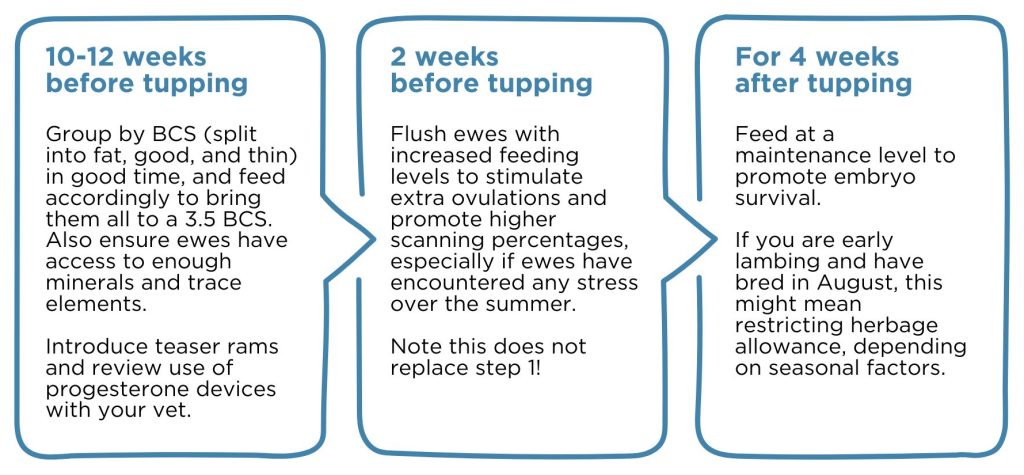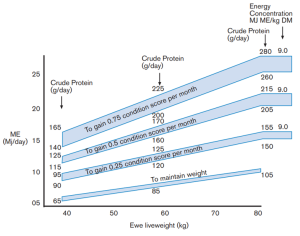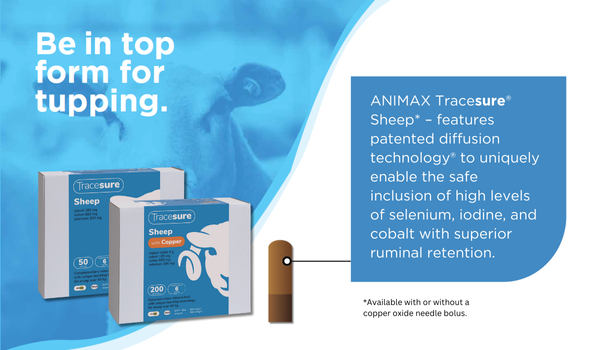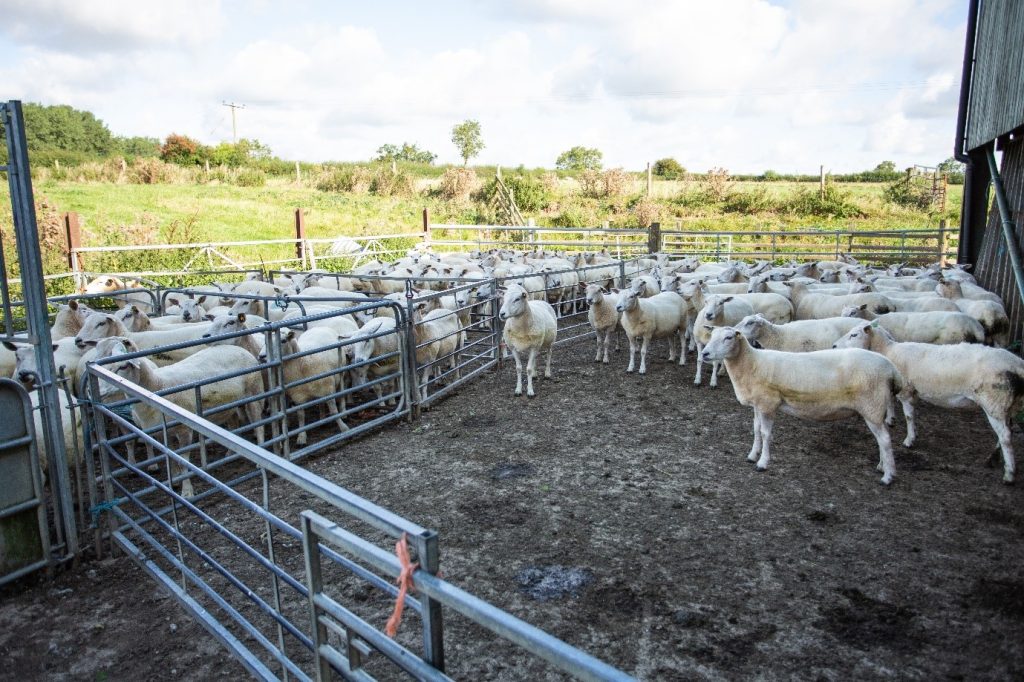If your aim for 2025 is compact lambing and maximised income from your next crop of lambs, you’re in the right place. This blog offers specialist intel on driving reproductive performance whilst minimising inputs on lowland sheep systems through looking at ewe supplements.
Before reading on, it is important to first note that every farm and flock is different. Geography, system and climate, to name a few, will all impact on what is right for each individual system. On this basis, it is important to know the key impactors on performance on your system. For example, ewe body condition score, lamb weight and weaning weight, or diseases.
In many low lying areas of Wales, England and Scotland, where soil is more productive and conditions considerably fairer, you’ll most commonly find lowland breeds – such as Texel, Suffolk, Charollais (to name a few) – with the ability to grow fast and breed prolifically.
Many lowland systems will typically expect (and target) to scan anywhere between 170% and 220%, depending on the system and timing. Ewe fertility is related to genetics, but influenced by management such as feed quality and progesterone devices and timing can be influenced by the use of teaser rams. In any case, successful tupping, scanning and lambing is highly dependent on sheep being in optimal condition well before tupping and maintaining this through pregnancy.
First ask: “Is every ewe in the right condition for tupping?”
According to a 2022 UK study at Rothampstead, ewe weight at tupping was among the top three economic factors for this sheep farming system to be profitable.
Alongside this factor, was ewe weight and body condition score (BCS) at lambing. The study confirmed that ewes in good condition over their reproductive period will have higher ovulation rates, higher scanning and lambing percentages, and will provide lambs with more quality colostrum and milk.
This will mean these lambs will – in turn – go on to grow and finish faster, making your farming system more profitable.
As a general rule of thumb and perhaps contrary to popular belief, having ewes weighing no more than 55kg – 65kg (depending on breed of course) at tupping is considered optimal and most profitable.
Weights outside of the optimal range for your flock and breed can impact feed costs (bigger ewes have a greater dry matter intake, for example, which may not necessarily mean more in terms of carcase value), lamb values, and cull ewe values. Every system needs to find their key factors.
Whilst achieving this is depends on many factors, the daily supply of energy and protein is the most critical in influencing weight and condition.
Then ask: “How do I effectively get my ewes in optimal condition for tupping?”
This answer to this question boils down to precision and preparation.

10-12 weeks pre-tupping:
Assess condition score, targeting lowland ewes at 3.5 BCS. Make any necessary grouping and dietary adjustments (split into fat, good, and thin) in good time to bring them all to that BCS. Introduce teaser rams and review use of progesterone devices with your vet.
2 weeks pre-tupping:
Flush ewes with increased feeding levels to stimulate extra ovulations, especially if ewes have encountered any stress over the summer.
For 4 weeks post-tupping:
Offer a maintenance feeding level to maintain embryo survival. If you are early lambing and have bred in August, this might mean restricting herbage allowance depending on seasonal factors.
Daily Energy and Protein Allowance before Mating

Grazing KPI’s
| If overfat | If hitting target | If thin | |
| 10-12 weeks | 2-4cm sward | 4-6cm sward | >6cm sward plus supplementation |
| 2 weeks | 4-6cm sward | 4-6cm sward plus supplementation |
If grass quality is poor or intake limited, provide access to a feedblock – such as Crystalyx Extra High Energy – at a rate of 200g a day for 2-3 weeks to ensure adequate protein, energy and other important nutrients.
Do check on health status of your flock with your vet, before introducing some feed types that can contribute to disease spread e.g. Pulmonary adenomatosis.
3 top grazing management tips:
- See if you can flush through lowering stocking rates on autumn grazing.
- Shorten rotational grazing periods to 1-to-2 days to utilise grass and promote grass growth.
- Test your grazing for trace element levels to ensure a sufficient supply for digestion, immunity, and reproduction is supplemented.
Finally, ask: “Am I missing any essential ewe supplements at tupping?”
With the reality of deficiency often underestimated, trace elements can be regarded as a bit of “silent assassin” to sheep production profitability.
That’s because MOST grass is deficient in one of more of the trace elements essential to digestive performance and fertility. As mentioned above already, before supplementing, it is vitally important that the trace element status of grazing is understood. This is irrespective the energy and protein in grass. In fact, if grass is growing abundantly, trace element deficiency is even more likely because of a ‘dilution’ effect.
It is also common for ewe supplements to offer less than enough trace elements (undersupply), or even more than enough (over supply). Either scenarios can pose a secondary risk to breeding performance and will contribute to overall profitability.
This is a stark reality that is commonly underappreciated but must be fronted up to, even if grass energy and protein is not deficient.
Introducing ANIMAX Tracesure® Sheep – the ewe supplements you can count on this tupping time.
- The bolus offers an assured supply of trace elements to every bolused ewe and ram every day for up to 6 months.
- The bolus is ideal if supplementary feeding is not planned. If supplementary feeding is planned, it takes away the risk of variable feeding rates from ewe to ewe.
- The bolus features patented diffusion technology®, the bolus retains its size and weight over time, meaning superior ruminal retention and low risk of premature passing during the 6 months of cover.
Want to shop around? Check out the bolus comparison table in this blog (scroll to the bottom).
ANIMAX Tracesure® sheep is approved for use in organic flocks and copper supplementation can be used under derogation with your vet.

To get your ewe supplements…
Find your local ANIMAX stockist.


